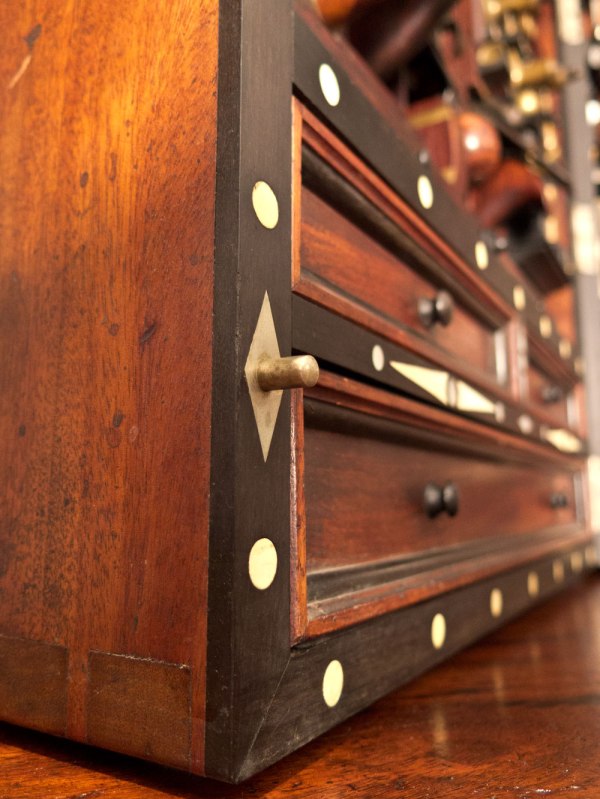
During the last five years, I’ve had more than my share of intimate contact with the famous H.O. Studley tool cabinet. And so wherever I travel I get asked this question: “What’s it like?”
So I lie.
“I hate it,” I say. And then I talk about how stressful it is to unload and load all the 245 tools from such a precious artifact without dropping them or harming the chest.
The truth is, my encounters with the chest have changed both me and my woodworking. (And I’m sure that Don Williams, the book’s author and team leader, and Narayan Nayar, the photographer, would concur.)

The chest mocks us. It is a piece of craftsmanship and design that is virtually faultless, no matter how close you get to it. It’s an experience you don’t get from looking at the poster of the chest or a picture on a screen. It is something that is best experienced in person.
If you start with your eye about 2” from the chest you can see that the interior surfaces are exquisite. The inlay is seamless. The grain has no defects.
As you step back, you can see how each grouping of tools is organized. They are stepped and scaled in an orderly fashion, some of them looking a bit like a military formation.

You step back again. And again. Until it is at the back of the room. At no point does it become imperfect.
We are finishing up our shooting and filming of the chest (and Studley’s workbench) this week for the forthcoming book “Virtuoso.” I promise the book will be incredible on every level we can manage. But what I also recommend that you – as a craftsman – make a pilgrimage to see the chest in person in May 2015 in Cedar Rapids, Iowa. Details at www.studleytoolchestexhibit.com/.
It will humble you, as it has me. And it will inspire you to be a better woodworker or toolmaker. The only reason not to go is if you are already a better woodworker than H.O. Studley.
— Christopher Schwarz
Like this:
Like Loading...
 A circa 1917 advertisement for U.S. Government bonds that was painted by Eugenie DeLand and features the Statue of Liberty.
A circa 1917 advertisement for U.S. Government bonds that was painted by Eugenie DeLand and features the Statue of Liberty.









